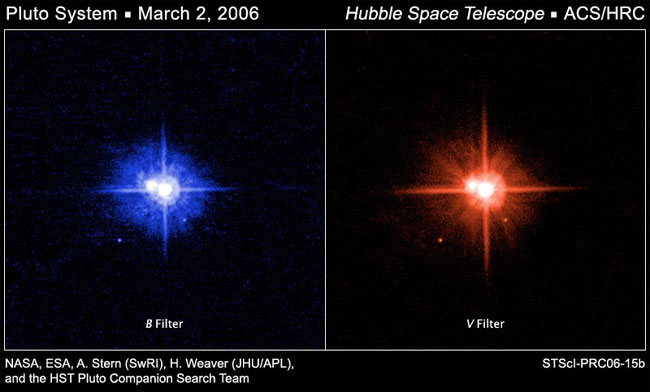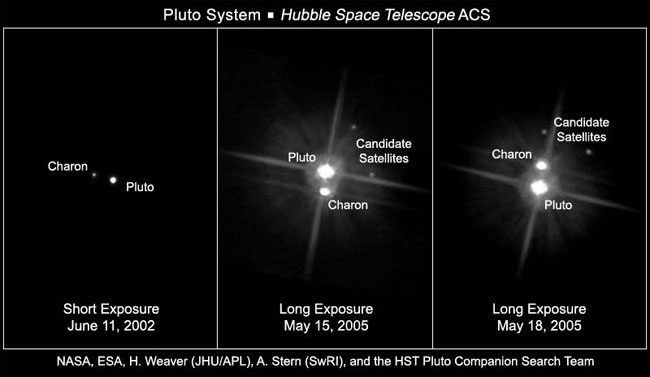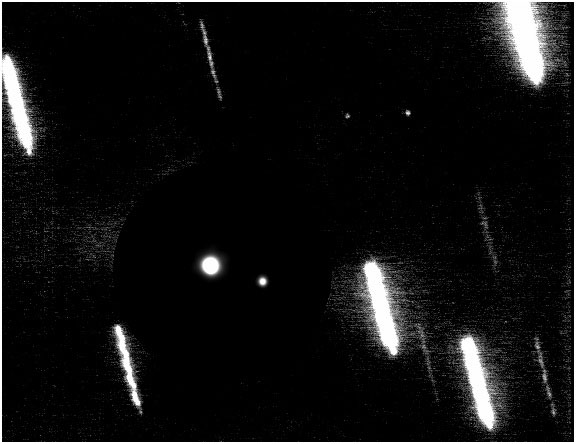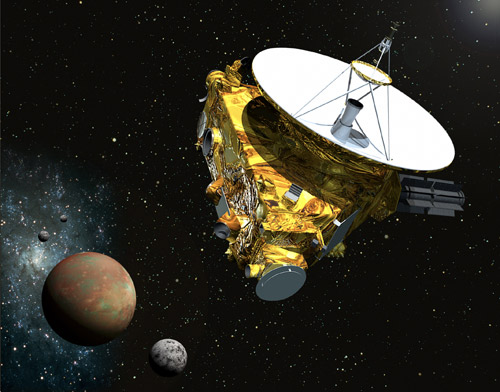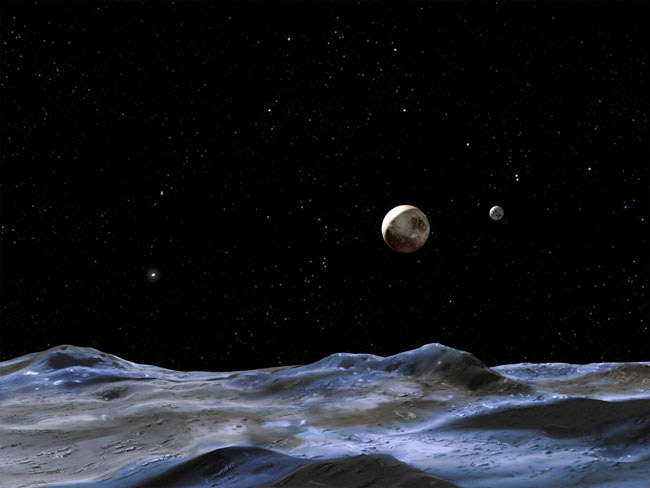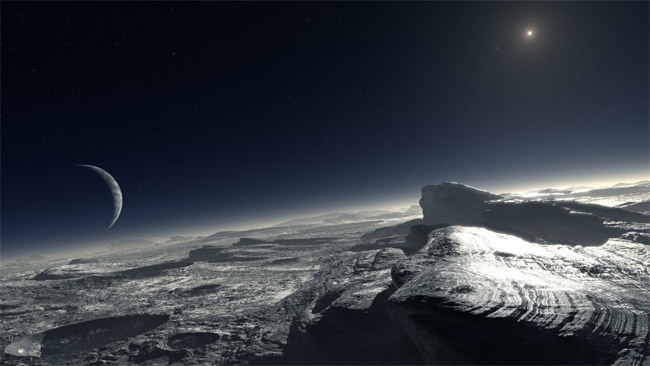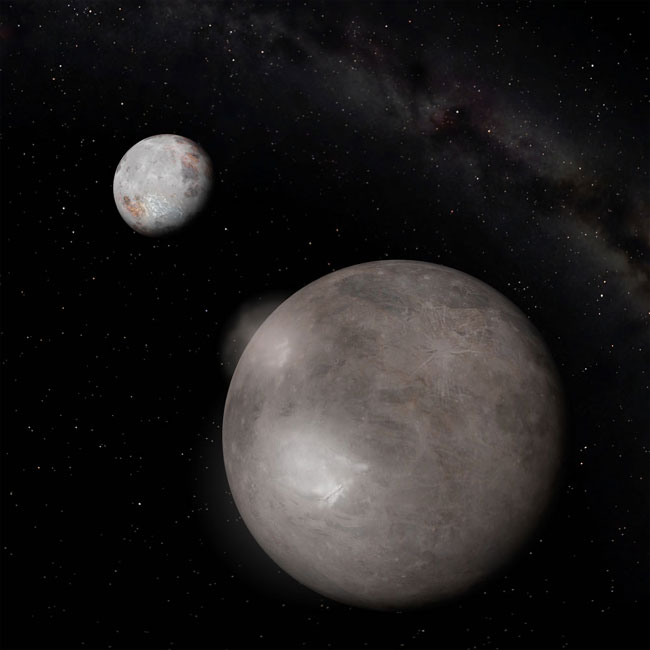Photos of Pluto and Its Moons
Hubble Finds Pluto's Moons Less than Colorful
These NASA Hubble Space Telescope images of Pluto and its moons were taken on March 2, 2006.
Two More Moons Discovered Orbiting Pluto
Hubble images revealing Pluto, its large moon Charon, and the planet's two new satellites. The candidate moons aren't visible in the short-exposure image [left], but can be seen in the middle and right-hand images.
Trick Allows Scrutiny of Pluto's Moon
From left to right is the before, during and after of the occultation of C313.2 by Charon on July 11. The brightest object in the center of the frame is Pluto. Below and to the left is the merged light from Charon and the background star. During the occultation (center image), only Charon is visible. The images are from the 6.5-meter Clay telescope at Las Campanas Observatory in Chile.
New Portrait Made of Pluto and Its Moons
An image of the Pluto system taken with the one of the ground-based Keck telescopes in Hawaii. The Pluto system moved with respect to the background stars during the one hour of observations, leaving the stars trailed in this image.
How the New Horizons Pluto Flyby Works (Infographic)
New Horizons becomes the first probe to explore Pluto in mid-2015. See how the New Horizons mission to Pluto works in our full infographic here.
To Pluto with Postage: Nine Souvenirs Stow Away on NASA Probe
This artist's rendering depicts the New Horizons spacecraft as it approaches Pluto and its moons in summer 2015.
The Pluto System As Seen from Nix or Hydra
The artist's concept gives a view of the Pluto system from the surface of Nix or Hydra, two of its moons discovered in 2005. Nix and Hydra are two to three times farther from Pluto than its large moon, Charon (to the right of Pluto), which was discovered in 1978.
Breaking space news, the latest updates on rocket launches, skywatching events and more!
Pluto's Identity Crisis Hits Classrooms and Bookstores
The announcement of Pluto's discovery in 1930, put out by the Lowell Observatory a few weeks after the observations had been made and analyzed.
Pluto's Atmosphere Warmer than Thought
Artist’s impression of how the surface of Pluto might look. The image shows patches of pure methane on the surface.
Pluto's Moon Is an Ice Machine
An artist's conception of Charon with Pluto in the background. The plumes and brighter spots depicted on Charon are thought to due to ammonia-laced water erupting from deep beneath the moon's surface.

Space.com is the premier source of space exploration, innovation and astronomy news, chronicling (and celebrating) humanity's ongoing expansion across the final frontier. Originally founded in 1999, Space.com is, and always has been, the passion of writers and editors who are space fans and also trained journalists. Our current news team consists of Editor-in-Chief Tariq Malik; Editor Hanneke Weitering, Senior Space Writer Mike Wall; Senior Writer Meghan Bartels; Senior Writer Chelsea Gohd, Senior Writer Tereza Pultarova and Staff Writer Alexander Cox, focusing on e-commerce. Senior Producer Steve Spaleta oversees our space videos, with Diana Whitcroft as our Social Media Editor.
